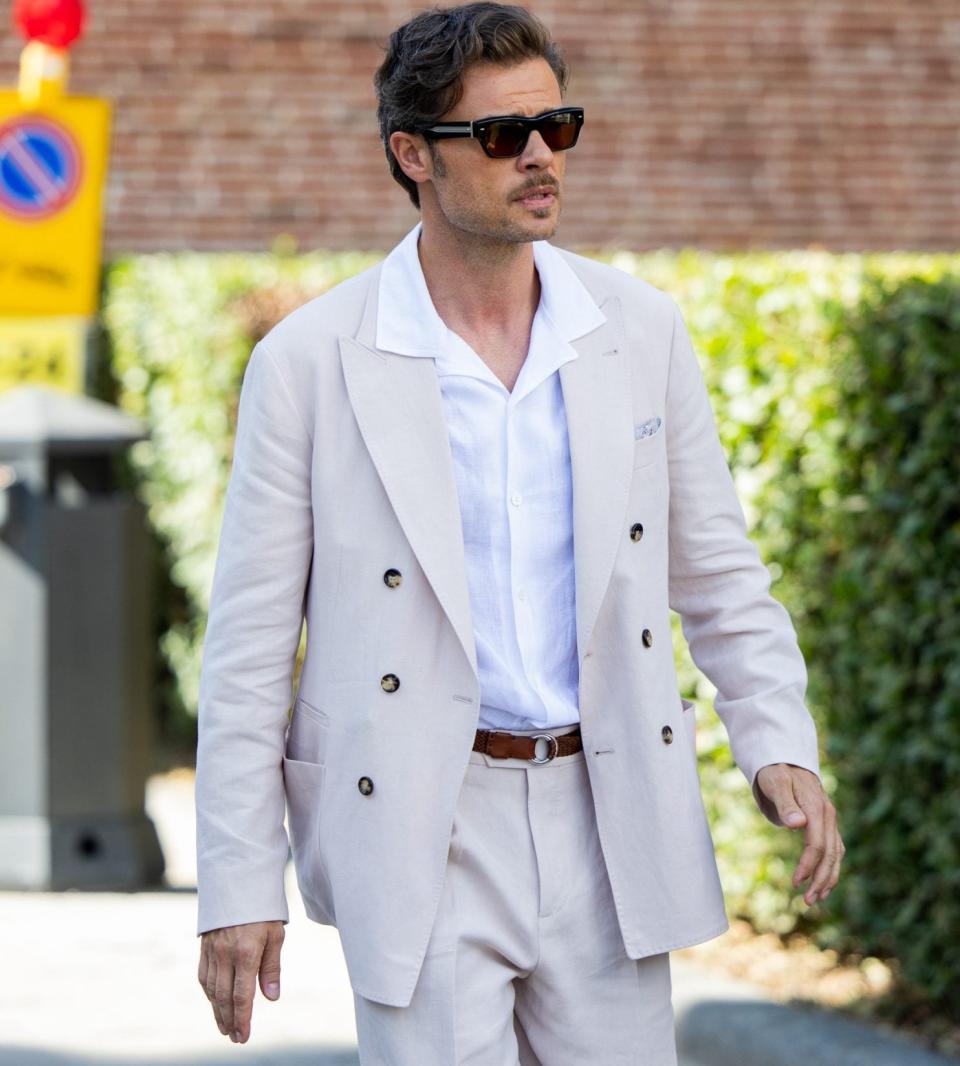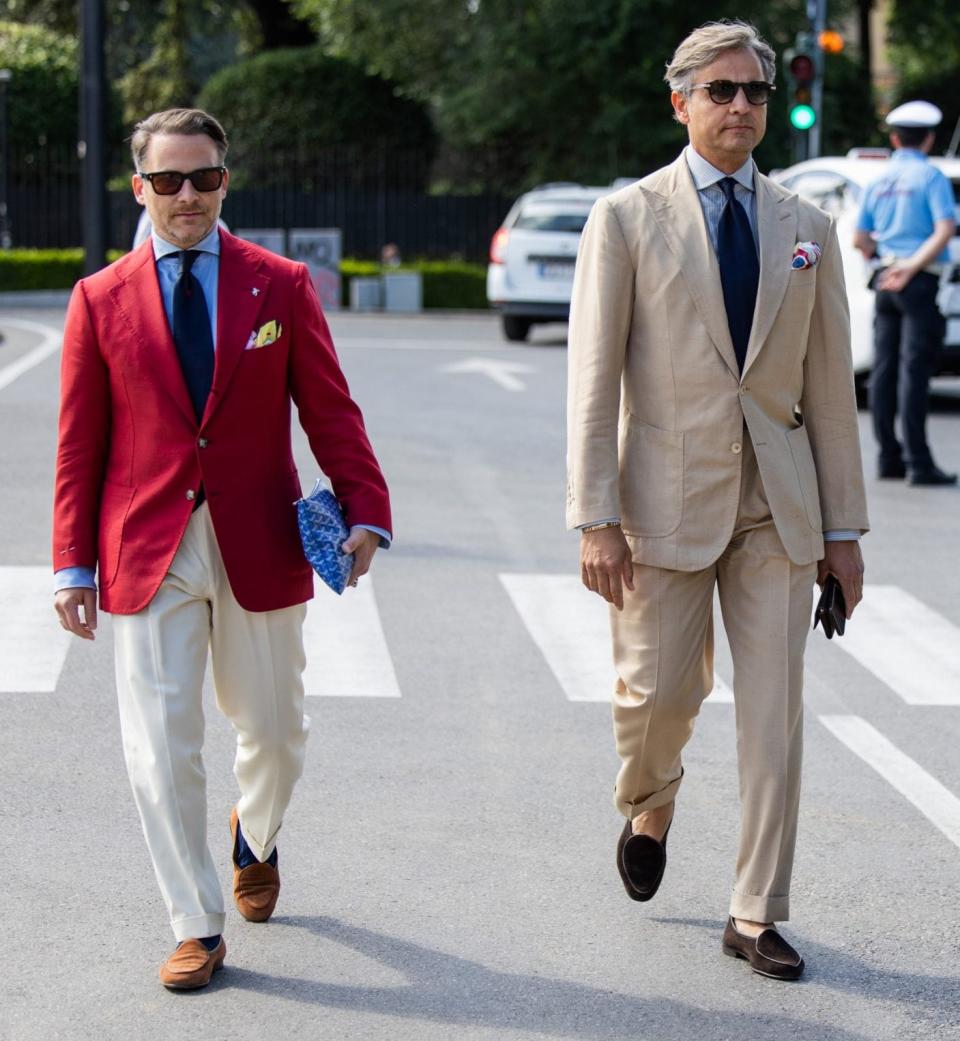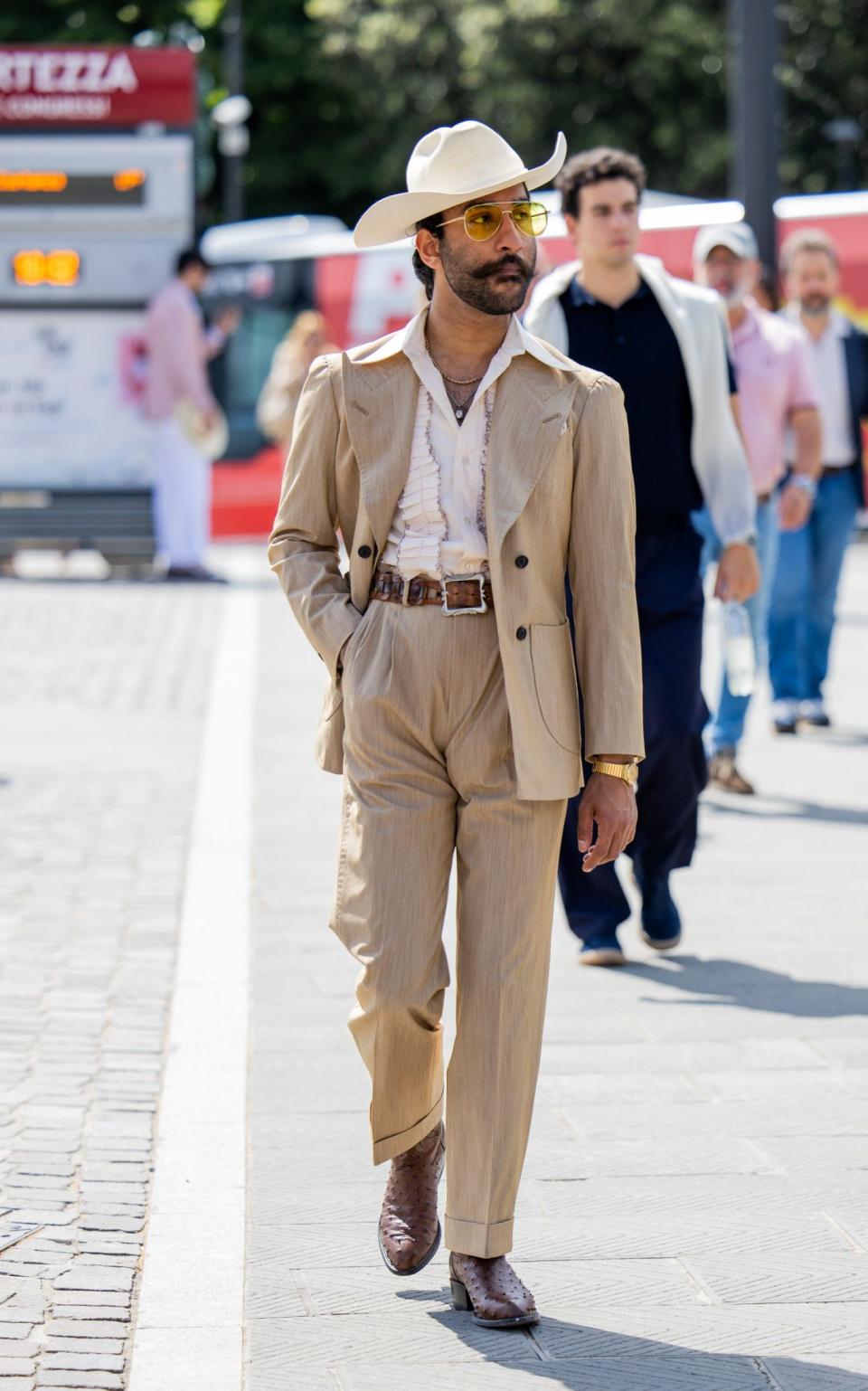The menswear secrets to borrow from the best-dressed Italians at fashion week

It’s aperitivo hour in Firenze, and as the sky streaks a luscious shade of coral, the golden light hits the St Regis hotel Terrazza, overlooking the Arno River. Aperol Spritzes the same shade as the sunset circulate, as the most stylish men on the planet raise a cheerful salute to the city that’s defined spellbinding beauty for centuries.
Welcome to Pitti Uomo, the bi-annual Florentine men’s fashion fair, where the drinks are flowing, the bars packed and the tourists agog at the sight that unfolds daily as flocks of Pitti Peacocks – a rare breed of men who dress up to the nth degree and shake their tail feathers around the piazzas and cobbled vias – do their thing. At ground level, away from the theatrics, there are real lessons of Italian style to be had in how the countrymen with claim to the finer things in life, approach the art of getting dressed.
“It is a way of dressing. Youthful shapes with classic elegance,” says the master of Italian classicism, Brunello Cucinelli, who showcased his new men’s collection at Pitti Uomo. “It’s about going back to chicness now. Italians have a way of mixing and matching colours and textures. It’s the way you combine your outfits, how you go about your lifestyle.” Diego Della Valle, the CEO of Tod’s, has another take; “Italians love the best in quality, from our clothes to our food. It’s a lifestyle that calls for it – the best pomodoro, the best leather – so we appreciate that sense of refinement in all walks of life.”
Reassess your suit

Perhaps it’s linked to their very proud sense of machismo, but Italians wear suits in a more assured and insouciant way than. Where they differ is the ability to stick to the classics – a great, single-breasted suit – but render it in a fresh way with an unexpected colour palette, for example; sage or nutmeg shades. They also relax the rules with how to wear it, ideal for when you’re zipping through traffic on your nifty, little Vespa, for example a polo shirt rather than a starched cotton variety.
“It’s important to break up the suit, for example a classic fabric with denim, match it with a polo shirt. It’s a more contemporary approach,” says Cucinelli. “But the word ‘elegant’ is not old-fashioned. It’s for now.”
Ditch the formal footwear

A handsome Oxford will always be appropriate, but the Italian way with footwear is less formal and more dynamic; a sleek little pair of driving shoes, for example, or smart trainers with a suit. See also espadrilles; they’re light in the heat and look rather playful with a suit. The Italian secret weapon at Pitti Uomo? Invisible socks, hidden from view by doing God’s work where it’s needed most.
Put it in neutral

Call it espresso dressing; the rich caramel, cinnamon and oatmeal shades that call to mind the nation’s favourite drink. Italian tailoring tends to be more experimental where colour is confirmed, but in a way that isn’t clownish; subtle, nuanced neutral tones over the standard navy and black that makes up most men’s suiting. It’s smart but a little more easygoing.
Think about fabrics

Of course, appreciation of a princely houndstooth jacket isn’t particular to the Italians – we Britons are also standard bearers in exceptional fabrication – but the particular petri dish that is Pitti Uomo is where the importance of raw materials is most evident. One American brand showcasing at the fair, The Salting, drew on American East Coast nautical pursuits but using Italian fabrics; raw linens and chunky mohair knits from the Tuscany region.
Elsewhere, on the clothes of the stylish showgoers, there are checks, plaids, chalk-stripes, nubbly tweeds and a sense of pleasure in enjoying the fabrication itself. See also the Italian art of pairing different textures and kinds of fabrics together; a soft herringbone jacket works with a denim shirt, perhaps with a raffish linen scarf. It’s an appreciation of La Dolce vita in clothing form.


